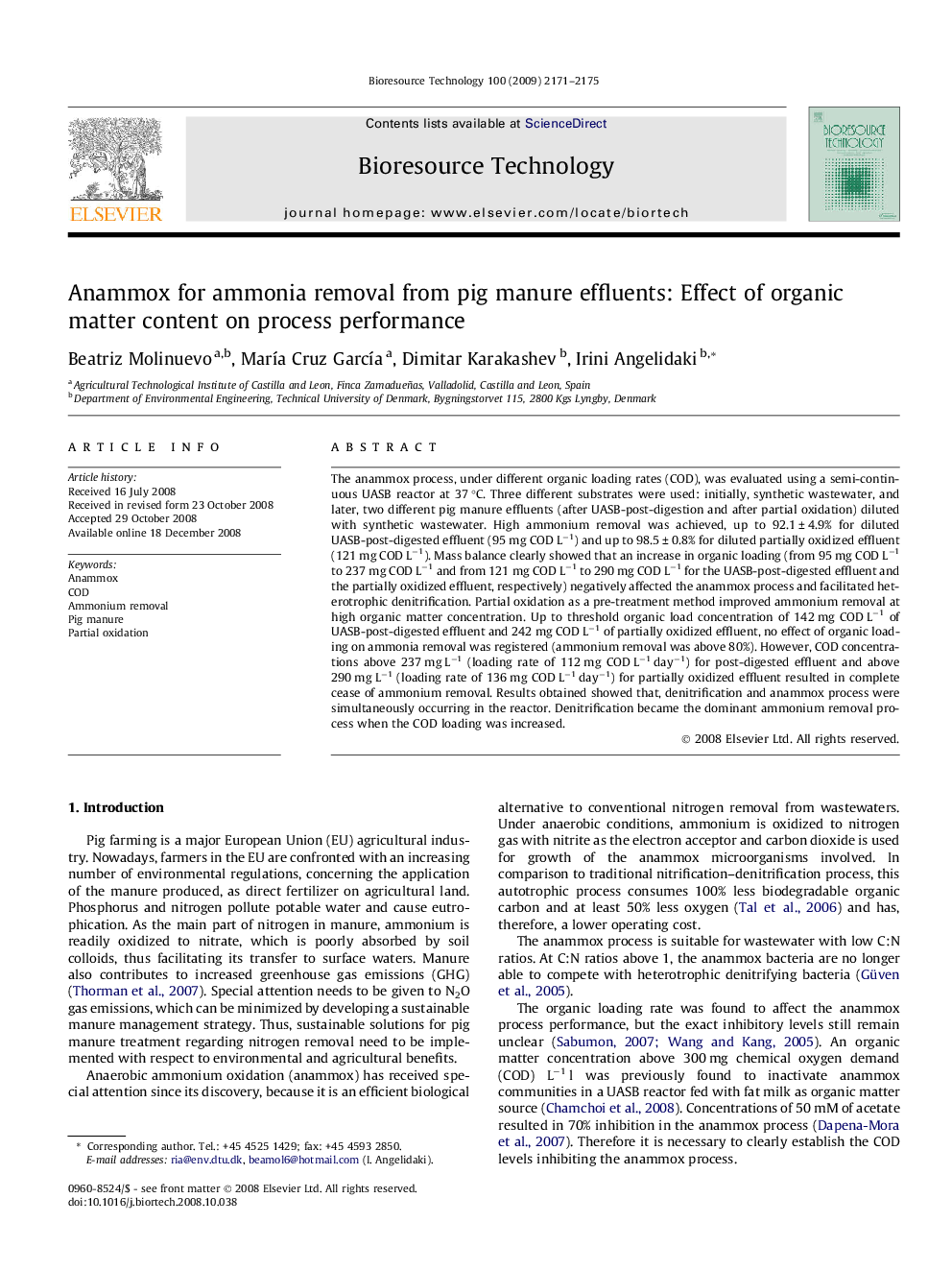| Article ID | Journal | Published Year | Pages | File Type |
|---|---|---|---|---|
| 684016 | Bioresource Technology | 2009 | 5 Pages |
The anammox process, under different organic loading rates (COD), was evaluated using a semi-continuous UASB reactor at 37 °C. Three different substrates were used: initially, synthetic wastewater, and later, two different pig manure effluents (after UASB-post-digestion and after partial oxidation) diluted with synthetic wastewater. High ammonium removal was achieved, up to 92.1 ± 4.9% for diluted UASB-post-digested effluent (95 mg COD L−1) and up to 98.5 ± 0.8% for diluted partially oxidized effluent (121 mg COD L−1). Mass balance clearly showed that an increase in organic loading (from 95 mg COD L−1 to 237 mg COD L−1 and from 121 mg COD L−1 to 290 mg COD L−1 for the UASB-post-digested effluent and the partially oxidized effluent, respectively) negatively affected the anammox process and facilitated heterotrophic denitrification. Partial oxidation as a pre-treatment method improved ammonium removal at high organic matter concentration. Up to threshold organic load concentration of 142 mg COD L−1 of UASB-post-digested effluent and 242 mg COD L−1 of partially oxidized effluent, no effect of organic loading on ammonia removal was registered (ammonium removal was above 80%). However, COD concentrations above 237 mg L−1 (loading rate of 112 mg COD L−1 day−1) for post-digested effluent and above 290 mg L−1 (loading rate of 136 mg COD L−1 day−1) for partially oxidized effluent resulted in complete cease of ammonium removal. Results obtained showed that, denitrification and anammox process were simultaneously occurring in the reactor. Denitrification became the dominant ammonium removal process when the COD loading was increased.
